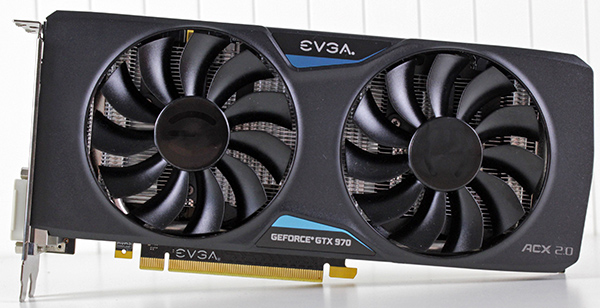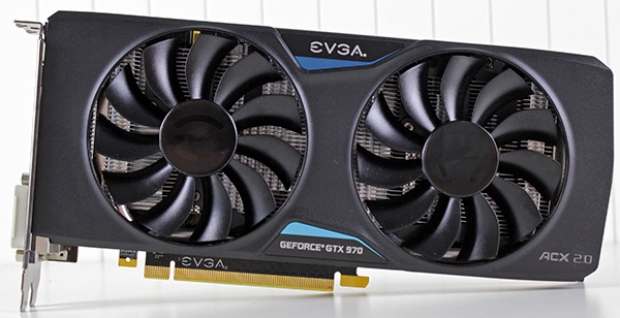Index

Review: Reasonable upgrade path
Nvidia recently released two new graphics cards based on its latest Maxwell GPU architecture, with exceptional performance-per-watt. The Geforce GTX 970 and Geforce GTX 980 will replace the outgoing Kepler-based Geforce GTX 780 and Geforce GTX 780Ti.
Today we will take a look at SLI performance, we will try out a dual GTX 970 setup. One of the cards comes from EVGA and it's the GTX 970 Superclocked ACX 2.0. The second one comes from the house of Gainward and it is called the GTX 970 Phantom.
Since both work at similar clocks, they're a good choice for SLI. Of course, in an SLI setup the faster card will have to downclock and match the clock of the slower card.
The GTX 970 Phantom works at a base clock of 1152MHz, while the reference GPU base clock is 1050MHz. Nvidia's GPU Boost 2.0 takes the average GPU clock to 1178MHz for the reference GPU and to 1304MHz for the Phantom card.
The GTX 970 SC ACX 2.0 works at a base clock of 1165MHz, while Nvidia's GPU Boost 2.0 takes the average GPU clock to 1317MHz.
EVGA and Gainward did not change the memory clock and the 4GB of GDDR5 memory is clocked at 1750MHz (7000MHz effective) on both cards, providing up to 224.3GB/sec of peak memory bandwidth.
Nvidia designed Maxwell to deliver more efficiency and performance. The GTX 980 and GTX 970 are vastly more efficient than their Kepler-based predecessors. The GTX 980 has a TDP of 165W, while the GTX 970 is rated at 145W. The old GTX 780 Ti and GTX 780 have a TDP of 250W. Just like their predecessors, both new cards are capable of delivering smooth frame rates at resolutions up to 2560x1600. In case you are planning to build a 4K capable rig, two GTX 970 cards should be enough for good frame rates and anti-aliasing in demanding titles.
GTX 980 and GTX 970 are based on the 28nm GM204 GPU. The GPU packs 5.2 billion transistors and has a die size of 398mm2. The GTX 980 comes with 2048 CUDA cores, while the GTX 970 has 1664 CUDA cores enabled. Three out of sixteen streaming multiprocessors, which each hold 128 CUDA cores, are disabled on the GTX 970.
With the GTX 980 and GTX 970, Nvidia also decided to launch a few new technologies there were not employed in the first incarnation of Maxwell on the GTX 750 series. Voxel Global Illumination, Multi Frame Anti-aliasing and Dynamic Super Resolution are built around old concepts, but they do a good job at reinventing them. Of course, DirectX 12 is supported on all Maxwell cards.

